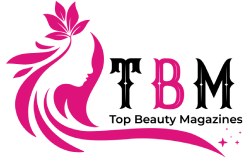Hijabi Hair Care involves specialized hair care routines designed for those who wear hijabs, headscarves often worn by Muslim women for religious and cultural reasons. This approach acknowledges the distinct challenges associated with wearing a hijab, including potential hair damage from friction, limited airflow, and the accumulation of sweat and oils. Here are some suggestions for effective hijabi hair care:
Table of Contents
Keep hair clean
Washing your hair regularly is an essential part of maintaining its health and cleanliness, especially for hijabis who may face unique challenges due to wearing a hijab. Here’s an elaboration on why and how to wash your hair effectively. Throughout the day, sweat can accumulate on your scalp, particularly in warmer weather or if you lead an active lifestyle. Sweat contains salts and other substances that can potentially irritate your scalp and contribute to odor. Washing your hair helps to cleanse away this sweat, leaving your scalp feeling refreshed. Along with this, it is also essential for removing oils and product buildup.

Protect your hair Hijabi Hair Care
Wearing a silk or satin under scarf or bonnet beneath your hijab serves multiple purposes, all contributing to the overall health and maintenance of your hair. incorporating a silk or satin under scarf or bonnet into your Hijabi Hair Care routine can significantly contribute to the health and appearance of your hair. It provides a simple yet effective way to minimize damage, retain moisture, and ensure that your hair remains strong, shiny, and resilient despite the challenges posed by wearing a hijab.
Choose hijab-friendly hairstyles
Choosing hairstyles that are gentle on your hair is essential for maintaining its health, especially when wearing a hijab. Opting for loose, low hairstyles or buns over tight ponytails or braids is a proactive approach to hair care, ensuring that your hair remains strong, healthy, and beautiful, even while wearing a hijab. By minimizing tension and breakage, you can maintain the integrity of your hair and promote optimal hair growth over time.

Moisturize regularly
Maintaining proper hydration is crucial for the health and vitality of your hair, particularly when wearing a hijab. When using moisturizing leave-in conditioners or hair oils, focus on applying them primarily to the mid-lengths and ends of your hair, as these areas tend to be drier and more prone to damage. Avoid applying too much product to the roots, as this can weigh down your hair and make it look greasy. By incorporating moisturizing products into your hair care routine and paying special attention to the ends of your hair, you can keep your hair hydrated, healthy, and beautiful, even while wearing a hijab.
Massage your scalp
Massaging your scalp regularly is a simple yet effective way to promote healthy hair growth and maintain scalp health. When massaging your scalp, use your fingertips rather than your nails to avoid scratching or irritating the scalp. Start at the front hairline and work your way back, applying gentle pressure in circular motions. You can also massage the scalp in sections, focusing on areas where you may experience tension or dryness. Incorporating scalp massage into your hair care routine, especially before washing your hair, can help promote healthy hair growth, improve scalp health, and enhance the overall condition of your hair. Plus, it’s a relaxing and enjoyable self-care practice that you can easily incorporate into your daily or weekly routine.
Give your hair breaks
Taking breaks from wearing your hijab whenever feasible is important for maintaining the health of your scalp and hair.It’s important to find opportunities throughout the day to remove your hijab, even if only for short periods, to allow your scalp to breathe and your hair to air out. Whether it’s during breaks at work or school, while at home, or during leisure activities, incorporating regular hijab-free intervals into your routine can contribute to the health and well-being of your scalp and hair.

Trim regularly
Regular trims are indeed crucial for maintaining healthy hair, regardless of whether you wear a hijab or not. To maintain healthy hair, aim to trim your hair every 8-12 weeks, or approximately every 2-3 months. However, the frequency of trims may vary depending on your hair type, length, and individual needs. If you notice significant damage or split ends between trims, don’t hesitate to schedule an additional trim to keep your hair looking its best. By making regular trims a part of your hair care routine, you can prevent split ends, promote hair health, and ensure that your hair looks and feels its best, whether you wear a hijab or not.
Eat a balanced diet
Absolutely, a balanced diet plays a crucial role in maintaining healthy hair, as well as overall well-being. By prioritizing nutrient-rich foods in your diet, you provide your body with the essential building blocks it needs to maintain healthy hair and support optimal hair growth. Additionally, staying hydrated by drinking plenty of water is also important for keeping your hair and scalp hydrated from the inside out.

